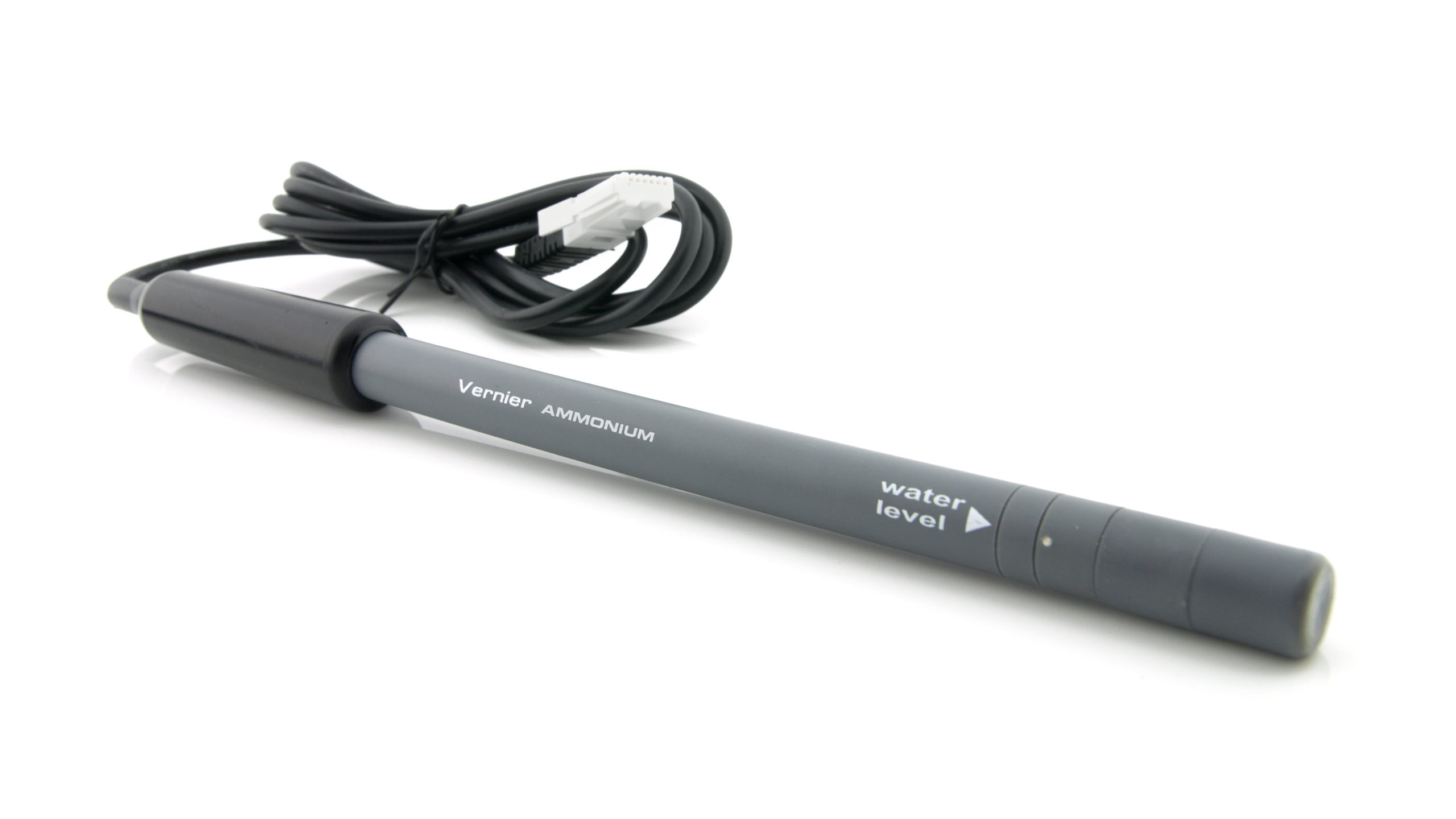Troubleshooting
- Primary Test: Check the raw voltages while calibrating in the standards. The high (100 mg/L) should be around 2.1 volts. The low (1 mg/L) should be around 1.3 volts.
- Secondary Test: Refer to General tips for using Ion Selective Electrodes (ISE).
Additional Troubleshooting
- Do any of your sensors require special storage?
- Do you sell ISE Standards?
- General tips for using Ion Selective Electrodes (ISE).
- How can I have my ISE read mV output instead of mg/L?
- What is the Difference Between Auto-ID Sensors, Non-Auto-ID Sensors, Smart Sensors, and Go Direct Sensors?
- How do I sterilize an Ion-Selective Electrode?
Specifications
- Range (concentration): 1 to 18,000 mg/L (or ppm)
- Reproducibility (precision): ±10% of full scale (calibrated 1 to 100 mg/L)
- Interfering ions: K+, Li+, Na+, Cs+, Mg3+, Ca2+, Sr2+, Ba2+
- pH range: 2 to 7 (no pH compensation)
- Temperature range: 0 to 40 °C (no temperature compensation)
- Electrode slope: +56 ± 4 mV/decade at 25°C
- Approximate calibration voltages
⚬ High (100 mg/L): 2.1 V
⚬ Low (1 mg/L): 1.3 V - Electrode resistance: 1 to 4 MΩ
- Minimum immersion: 2.8 cm (1.1 inch)
- Probe Dimensions
⚬ Electrode length: 155 mm
⚬ Body diameter: 12 mm
⚬ Cap diameter: 16 mm
⚬ Cable length: 100 cm
Calibration
Calibrate? Yes. Conduct a two-point calibration, using the standard solutions that are shipped with the sensor. For more information on calibration, see How do I calibrate my sensor?
- First point
- The ISE should be soaking in the High Standard.
- Enter the concentration value of the High Standard, then click or tap Keep.
- Second point
- Remove the ISE from the High Standard.
- Rinse the electrode well with distilled water from a wash bottle.
- Gently blot dry with a paper towel or lab wipe.
- Place the electrode into the Low Standard. Wait for the voltage reading to stabilize.
- Enter the concentration value of the Low Standard, then click or tap Keep.
Important: Make sure the ISE is not resting on the bottom of the container and that the small white reference contacts are immersed. Make sure no air bubbles are trapped below the ISE. Hold the ISE still and wait for the voltage reading to stabilize. Stirring the solution during this process is ideal.
Related Products
- Electrode Support (
ESUP ) - Go Direct® Ammonium Ion-Selective Electrode (
GDX-NH4 )
Replacement Parts
- Ammonium Replacement Module (
NH4-MOD ) - Standard NH4 ISE Solution (
NH4-LST )—Low Concentration - Standard NH4 ISE Solution (
NH4-HST )—High Concentration - Electrode Storage Bottles (
BTL-ES )

